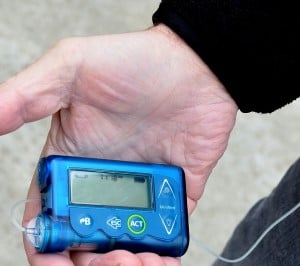Search
Research
Distinct Gut Virome Profile of Pregnant Women With Type 1 Diabetes in the ENDIA StudyFindings provide novel insight into the composition of the gut virome during pregnancy and demonstrate a distinct profile of viruses in women with type 1 diabetes
Research
Distinct gut virome profile of pregnant women with type 1 diabetes in the ENDIA studyThese findings provide novel insight into the composition of the gut virome during pregnancy and demonstrate a distinct profile of viruses in women with T1D
Research
Role of HLA-DQ typing and anti-tissue transglutaminase antibody titers in diagnosing celiac disease without duodenal biopsy in type 1 diabetesHLA-DQ typing is not cost effective as a first-line screening test for CD in T1D patients because of over-representation of CD permissive HLA alleles in this group
Research
Insulin Pump Therapy in Adolescents With Very Poor Glycemic Control During a 12-Month Cohort TrialWe conclude that insulin pump therapy can be an effective tool to improve glycemic control in adolescents with long-standing treatment resistance
Research
Performance of medtronic hybrid closed-loop iterations: Results from a randomized trial in adolescents with type 1 diabetesThis study investigates the performance of an iteration of the Medtronic hybrid closed-loop algorithm
News & Events
30% of children at risk of future heart diseaseAlmost 30% of 14-year-old Australian children fall within a group identified as being at future increased risk of heart disease, type 2 diabetes or stroke
Research
Type 1 and Type 2 Diabetes DNA bankA register which stores demographic and clinical data on all patients attending the diabetes clinic at Princess Margaret Hospital
Research
Sprint proof of concept studyThis study will evaluate the effect of two types of aerobic exercise

News & Events
Cholesterol and blood pressure drugs help teens with diabetesThe study involved screening young people to learn more about the development of long-term kidney, eye and cardiovascular complications in adolescents with T1D.

News & Events
High hopes for preventing lowsResearchers led by the team at the Children’s Diabetes Centre at The Kids have taken a key step to a fully automated closed-loop insulin delivery system.
